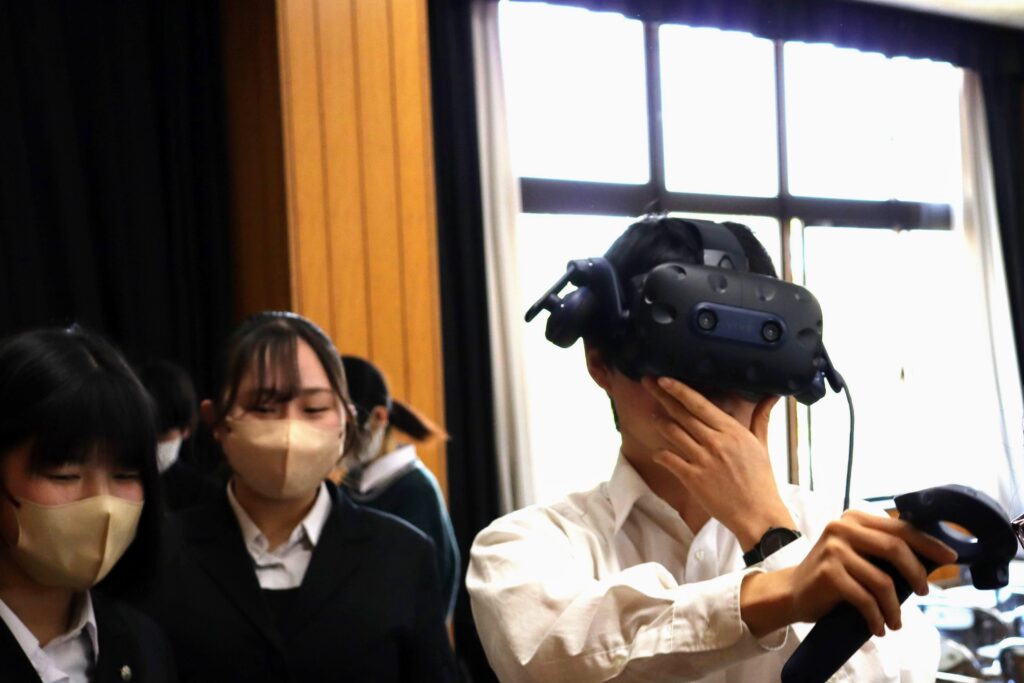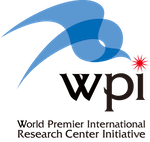Inspiring Young Scientists Using Virtual Reality to Explore Knotted Chiral Meta Matter
On March 2, 2023, Associate Professor and WPI-SKCM2 Deputy Director for Outreach and Dissemination, Yuka Kotorii, and the WPI-SKCM2 Outreach Team introduced the world of knotted chiral meta matter to forty students at Hiroshima University Junior and Senior High School in Hiroshima City. Aiming to inspire and cultivate the next generation of young scientists, this event allowed students to hear a lecture from Kotorii, an expert in knot theory, and then engage with knots themselves through WPI-SKCM2’s virtual reality system and other hands-on activities.
Kotorii delivered a lecture on “Research at the International Institute for Sustainability with Knotted Chiral Meta Matter,” explaining how knots and mathematics are involved in the research and development of knotted chiral meta matter, which can contribute to sustainability. The lecture was followed by an active question-and-answer section. Mitsugi Hashimoto, a teacher at the high school, expressed his hope that the students would “get in touch with cutting-edge research and realize that what they learn every day is connected in various ways.”
In the subsequent experiential learning session, students were able to interact with a trefoil knot using VR goggles. The system was developed by WPI-SKCM2 international PI, Sabetta Matsumoto, and her PhD student, Brian Day, from Georgia Tech. Jay Morris, a University of Birmingham graduate student visiting WPI-SKCM2 for a few month exchange, helped introduce the VR technology during the outreach visit. He stated, “I think its main purpose was to put abstract mathematical ideas into a form that the students could more easily interact with. In some ways, it’s not too far off from being a video game, which certainly would have helped to engage me when I was their age.” The high school students also built chiral molecules using molecular models. Their feedback included comments such as “Using VR allowed me to understand the structure of the knot more clearly” and “Creating actual shapes using models deepened my understanding.”
These students were all from the high schools’ Advanced Science Course, a program developed through the Super Science High School Initiative, funded by the Japanese Ministry of Education, Culture, Sports, Science and Technology, also known as MEXT. Hiroshima University Junior and Senior High School received this funding because it prioritizes science, technology, and mathematics and is encouraged to develop connections with research institutions. Through their engagement with SKCM2, these students have been given a first-hand glimpse into the exciting world of scientific research, hopefully motivating them to continue their journey into science and mathematics.
If you would like WPI-SKCM2 to visit your high school, please contact wpi-skcm2-outreach_at_ml.hiroshima-u.ac.jp.



